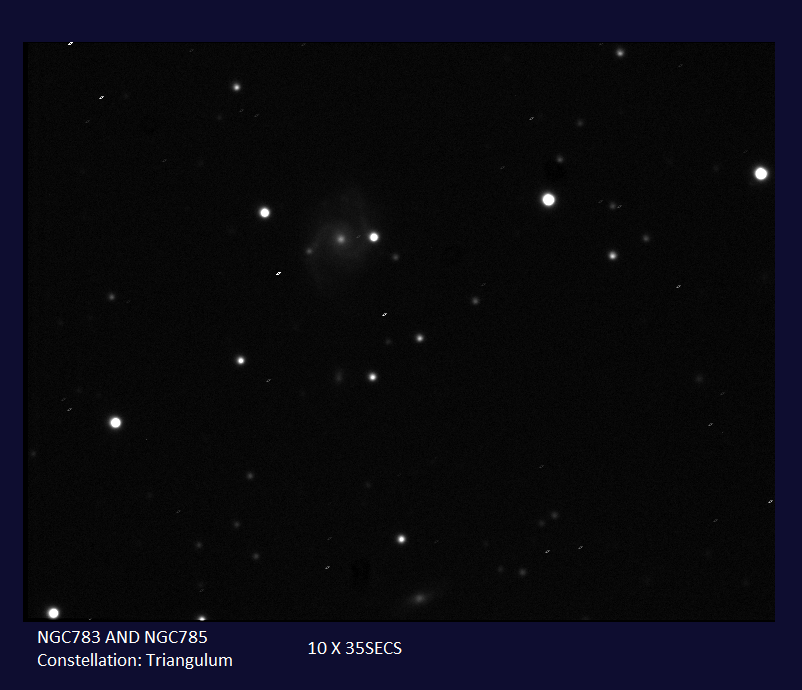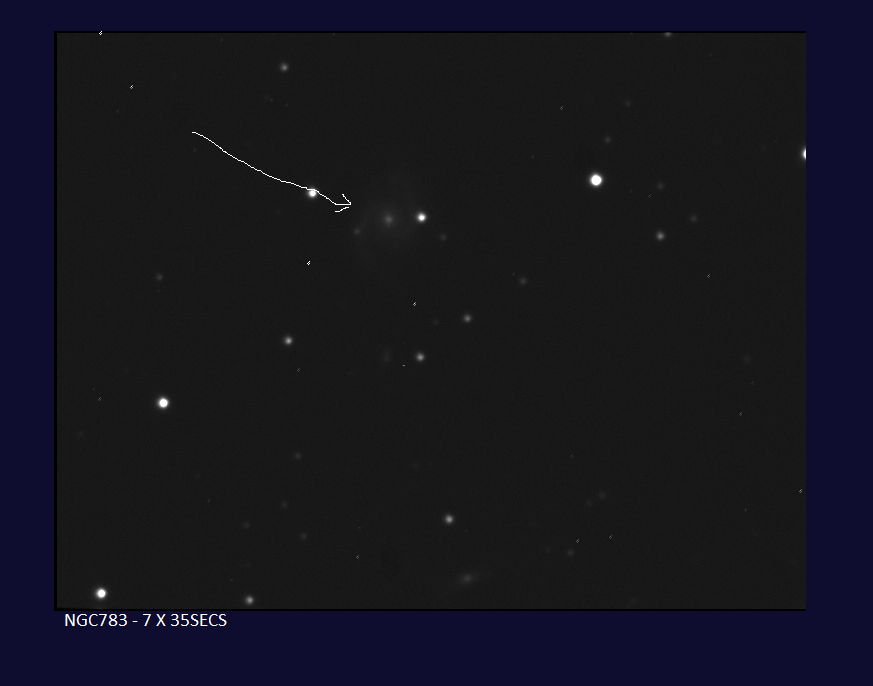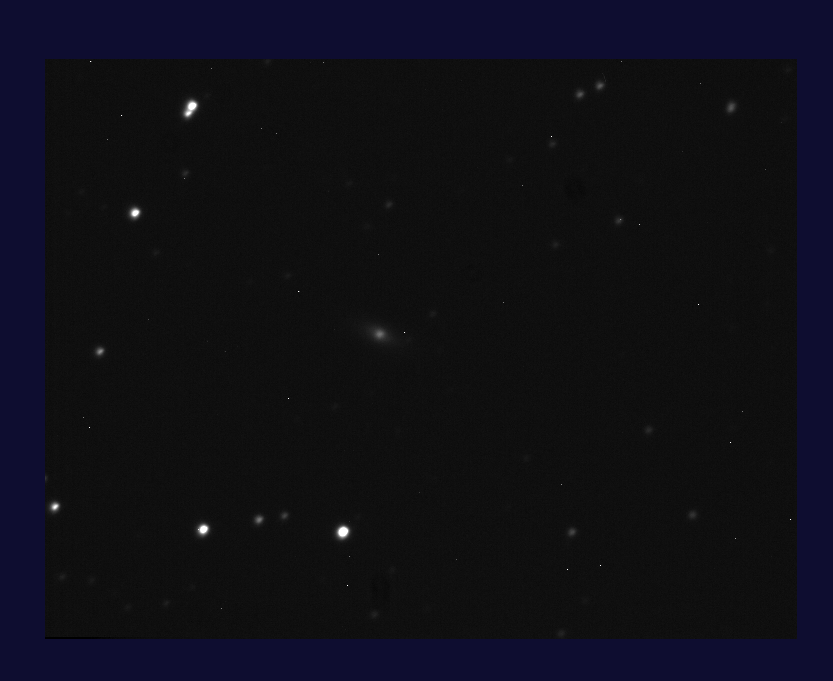-
Posts
1,655 -
Joined
-
Last visited
Content Type
Profiles
Forums
Gallery
Events
Blogs
Posts posted by stash_old
-
-
1 minute ago, gilesco said:
You must not assume I'm always replying to your post.
@Stuart1971 mentioned the NUC, and I actually would like to know what its powerdraw would be.
I dont but OK no problem 🙂
-
18 minutes ago, gilesco said:
How much power does a NUC draw?
Haven't a clue but a lot more than 3.1Amps at 5V for a std PI 🙂
-
1 minute ago, gilesco said:
How much power does a NUC draw?
who said anything about an NUC - I didn't mention it 🙂
I have been using Indi for over 6yrs on various platforms and modes !
I have/still use RPI's (2 onwards including Zero) with Indi and in TRUE server mode (so no GUI's) running on 2 or more RPI's.
Some people expect too much of a £58 (RPI 4B+ 4GB excluding other bits) and then become disappointed and make comments which are not true about the PI. Especially when you consider the amount a lot spend on the Astro kit.
I was ,as I said, pointing out the facts! Dont hang the messenger!
-
But then when you have added all the add-ons etc - somewhere aroung £180+ then of course you could get a 2nd hand 8gb,120gb ssd ,Intel I3 or I5(or AMD equiv) PC's (even though not the "latest gen") - run Linux/Indi (Ubuntu or whatever your flavour takes your fancy) OR Windows Ascom if you wish.
These will knock the spots off any RPI todate running Indi/OAcapture,Stellarium etc ,have mostly flawless WiFi(no USB / wifi clash),are about the same size when taking into account the SSD/Fan/Larger Case!
Just saying 🙂
-
 1
1
-
 1
1
-
-
Quote from manual no mention of the port Type-B next to Polar scope.
Appendix D. Computer Control a CEM60 Mount The CEM60 mount can be connected to a computer using supplied serial cable. A RS232 to USB adapter (not supplied) is needed if your computer does not have a serial port, like most of the laptops on the market today. Follow the adapter instructions to install the adapter driver. When the communication between the mount and computer has been established, the mount can be controlled via ASCOM protocol. To control the mount via ASCOM protocol, you need: 1. Download and install ASCOM Platform from http://www.ascom-standards.org/. Make sure your PC meets the software requirement. Refer to the ascom-standards website for details. 2. Download and install the latest iOptron Telescope .NET ASCOM drive from iOptron website. 3. Planetarium software that supports ASCOM protocol. Follow software instructions to select the iOptron Telescope. Please refer to iOptron website, www.iOptron.com, under Support Directory/ASCOM Driver, iOptron Telescope .NET ASCOM Driver, for more detail. CEM60 mount may also be directly controlled by other third party software and accessories. Please contact them for more information.
Plus Cloudy nights Cem60 users connect this way as well although some of the info is for the older model https://www.cloudynights.com/topic/573493-cem60-connection-to-laptop/
-
Sorry then cant help further - Email Ioptron for a clearer explanation (exploain your Asair set up) or perhaps someone who has that mount will help. Please post any solution as I am looking at the 60 or 70G as an upgrade next year. Happy New Year
-
WARNING !!!!! If the Mount USB (B) port is a ST4 then the cabling I showed is wrong . The ST4 port on Mount USB(B) should connect to a Guide port on appropriate camera not as I showed in my picture. The GEM60 manual is lacking simple (for me IMHO) details with pictures - too wordy.
-
this is how I think it should be connected assuming
1. Port on what you call Mount USB(B) is a ST4 guilder port ( I cannot see any other port in the picture )
2. The Serial - USB (A) cable is a RS232 to USB adapter
3. The saddle USB HUB is standard hub.
4. ALL USB cables involved are fully wired - some are power only but I think yours look the fully data and power USB cables.
Read the manual again but does mention where the ports actually are specifically - e.g. what is the port on your picture called "Mount USB (B)" - which I assume is a ST4 guild port.
-
See attached picture but I do not understand what Mount USB (B) port is - are you sure this is not just a Guide Port and not a Mount port as the Serial - USB(A) would seem to be the mount connection which I would connect to Saddle HUB (it repeats everything). If the Mount USB(B) is a guide port then that should also plug into Saddle Hub. Then take a USB cable from Saddle Hub to Asiair. If you can get to the command line of the ASair and do lsusb with the cables connected as suggested you should see 2 ports - one mount and one Guide port - if that is what Mount USB(B) port is.
-
Not enough info but a "guess" would be you are hitting the standard Linux USB Adapter problem of being able to identify usb devices uniquely and that the CEM60's built in hub is not "standard" and transparent.
If Linux cannot identitify the device by its unique signature then any software being used might be given the wrong device - so camera software on ASIAR trying is trying to talk to the mount.
Although your descriptions dont match this senario perfectly.
A "standard" USB hub should be transparant unless there is a power problem - your GEM60 doesn't provide enough power for any device connected to it - camera's would show this , a mount shouldn't as its supplied directly I would have thought for the GEM60's. So using the same cables that work but just putting and extra HUB in the equation shouldn't cause a problem.
You keep using the word "RS232" - must be a bit careful here - True RS232 uses 12v+ signal lines ,most mount ports are TTL and use 3.3 or 5v. But not knowing the GEM interface I cannot truthfully make a judgement. But having a quick read of the manual it always says RS232 serial - I did say a quick read.
However the manual also said
"The USB hub is non-powered and will draw power from the source USB port (for examplecomputer USB port). Therefore, the number of usable USB portsmight be limited,depending on the power consumption of the accessories."
Depending on the "draw" this maybe too much for the Raspberry PI USB ports.
-
If you used the Handset and cable before (and it worked ok) then I would NOT flash the Handset - no point if you haven't updated the Mounts own firmware. It should still work if the orig cables are intact and the Handset hasn't gone belly up(tech term). Have you someone local who has the same Mount/Handset to test each element.
You are just trying to use the handset and Mount alone - no connecting to a PC ?????
-
 1
1
-
-
5 hours ago, Anthonyexmouth said:
Stellarmate OS
It still runs the same OS as Astroberry. Stellarmate just has one to one paid support and a few more bells and whistles.
Astroberry is purposely NOT leading edge so tends to be 1 step behind in standard form. So individual components may not be the latest ("cant please all the people all the time")- so for example any new ZWO or DSLR camera may not be supported.
IMHO I would NOT wait for the next RPI release as past major releases have come with problems - NO USB Boot,USB3/WiFi interference etc - they do get resolved in the end. Plus if the new Compute release is anything to go by they have production problems - last time I looked RPI Compute 4 was on back order until June 2021. Remember once you install a non supported piece of software on Astroberry you will be on your ownish.
You can also Compile the whole thing yourself on Raspbian OS (even with beta versions of libs and software).
Not tried it but Stellarium can still be run on Windows (Mac and Linux) and "talk" to Astroberry/Stellarmate using the Indi protocol. CDC will work on Windows/MAC/Linux and will talk to Astroberry/Stellarmate from other devices.
The ZWO camera's you quoted should be OK but check on the Indi forum to be on the safe side - that includes any other piece of computer controlled gadgets (focuser ,mount,Dome etc etc) you wish to use with Indi.
CCDCIEL is an alternative to Full blown Indi and it gives you the ability to run on Windows but talk to both Indi and Ascom devices at the same time - within certain limits.
In short you can have your Xmas cake and eat it - well sort of! 🙂
-
 1
1
-
 1
1
-
-
12 hours ago, saac said:
The brain after all enhances the image, photons being converted to electrical signals and then processed by the brain. We may well argue that what we see with our "eyes" does not itself reflect reality.
Sorry I wrote my reply to Moonshed including the reference to the eye's an brain before seeing you had already stated the same.
-
 1
1
-
 1
1
-
-
16 hours ago, Moonshed said:
Yes we are, but I don’t understand what your point is. For instance I could just as equally say it doesn’t matter if you are looking at the sat nav screen when driving or through the windscreen, we are using a common input method - our eyes. The sat nav screen is only a digital representation of the road ahead, but is not the road ahead, that’s only seen through the windscreen
Again, I fail to understand what you are saying here, of course it matters how the image is projected onto the eye. I would say there is a massive difference in seeing the Grand Canyon if I am actually standing there and the image that is projected into my eye is light reflected from the Grand Canyon itself, as opposed to having those images projected onto my eye from a tv screen in Norfolk.
It’s the same difference between looking at a screen or looking through an eyepiece. The screen is an electrical digital representation of the photons falling onto a camera’s sensor chip whereas looking through the eyepiece is seeing the actual, real photons coming from the object, not an electronic representation of it.
All that aside, as I have already said there are numerous ways we can observe the universe and technology is discovering different ways all the time, it is up to the observer which method they prefer to use, they all have their uses. My only point is that looking through the eyepiece is seeing the actual, real object, whereas looking at a screen indoors is far removed from that.
The brain is only making a model of what its "see's" - funny but thats a electronic representation via electrochemcal thru nerves .
As for "seeing the Grand Canyon if I am actually standing" - but you are not standing next too , or any where close, to 99.99% of space objects you look at .
Its plain we are never going to agree so I will leave it at that.
EEVA users are quite happy with what we see and how we see it!
Each to is own.
-
Simple I quoted a quote - sorry it was aimed at "Moonshed" .
-
1 hour ago, Tiny Clanger said:
I feel you may as well be watching a television program about astronomical images, there being no connection between you and your telescope other than electronically.
EEVA,IMHO, also includes "near real time stacking" be it software or hardware stacking. The later "Electronically Enhancers" the visual astronomy which is why its called EEVA .
Using an eyepiece or looking at a screen we are both using a common input method - our eye's.
Dont forget many EEVA users use simple mobile AZ set ups which they use "in the field" just like visual observers so in my book we (EEVA users) are just as "connected".
How the image is projected onto the eye is irrelevant.
-
 1
1
-
-
-
-
-
The oldest quote in IT "you are only as fast as your slowest component" is still true. E.G Not all SDD's are the same speed wise , Using 2 SSD's with data and programs spilt across the 2 SSD's(1 all data etc) , Getting your Virus checker to ignore data files in a folder and of course motherboard design.
Is the final saving in time worth it against the cost - only you can say as its down to the individual and how deep your pockets are - like Astro in general 🙂
I would use an abacus if I could have clear skies most nights LOL!
-
3 hours ago, Martin Meredith said:
Good to see some shots of rarely-viewed open clusters. Kudos for keeping at in blustery conditions. Were you guiding your guidescope with a different guider?
Martin
Yes using asi120mm(old version) via QHY Mini scope. Impossible otherwise in that gusty wind even with very short exposures. Not alot of info on the King 7 - well I didn't find much info but it seems to contain a Nebula and variable stars - maybe !
It just fits the FOV of the Lodestar/C9.25 nicely!
-
-
Then just buy a 2nd hand mini pc with w10 installed(and enough usb ports) and what Julian suggests using W10 not RPI or linux.
-
 1
1
-
-




















Adventures of Pi
in Discussions - Software
Posted · Edited by stash_old
This was the item ,pointed out to me by Dr-Ju-Ju, which has worked well "in the field" for me ! https://thepihut.com/products/120w-dc-dc-converter-12v-10a?variant=27740791825¤cy=GBP&utm_medium=product_sync&utm_source=google&utm_content=sag_organic&utm_campaign=sag_organic&gclid=Cj0KCQiA88X_BRDUARIsACVMYD9AqS9xjSu2BKOQMwylvzhxrJ6FE2QfRVdFRtAiHsLI0K11ZrTkOFsaAmdIEALw_wcB
Took time to find the Distri Box I used ,again nominated by another SGL user, as they dont do Ebay anymore - https://domar.com/fused-12v-dc-power-supply-distributor.html